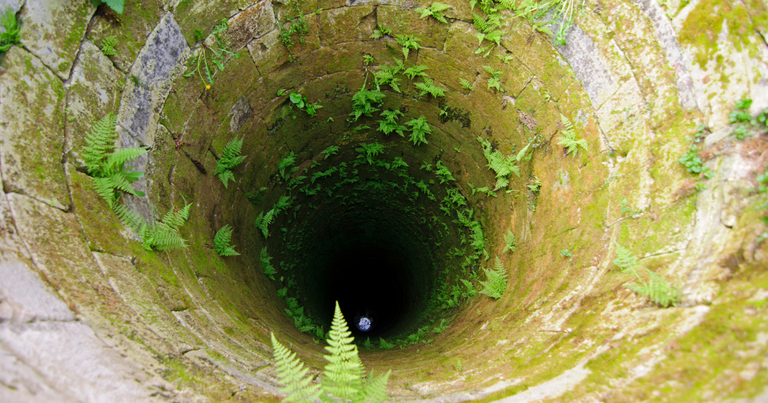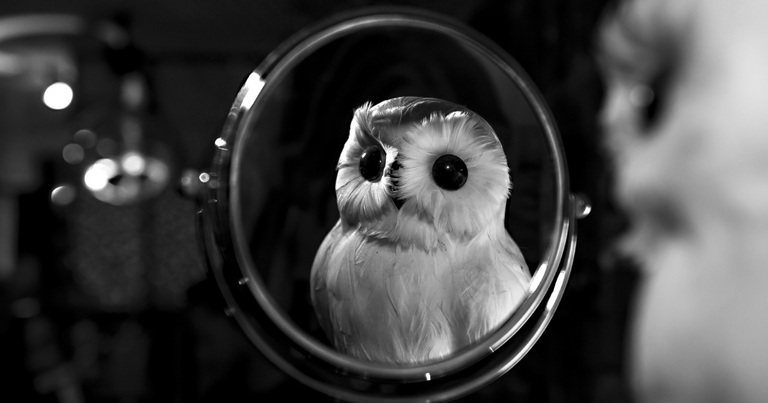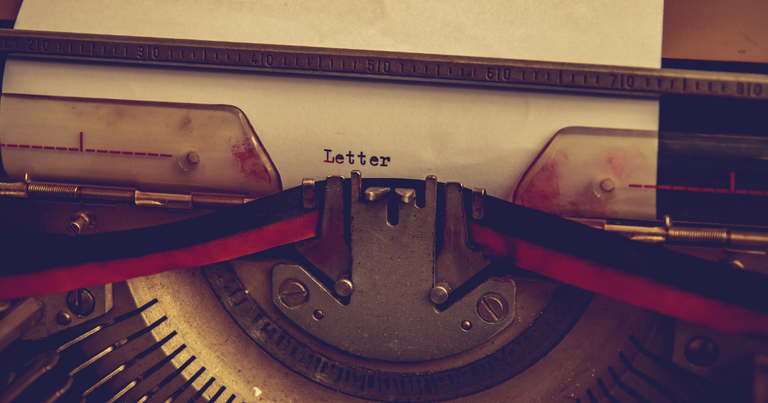5 Easy Steps To Obliterate Writer's Block (every time)
....
..TAP...TAP...TAP........
....DELETE...DELETE...DELETE...

.....
...........
......................
"Here it comes... Here it comes!"
.........
........TAP TAP TAP...TAP...TAP..........
........................DELE-E-E-E-E-ETE..............
"Come on!"
.....TAP TAP TAP TAP TAP......
..........HIGHLIGHT EVERYTHING.........
................DELETE.......................
..............START OVER........................
...........
..........................
......................................
Yep.
This is called writer's block - and you may know it well.

If not, let me remind you:
You brew yourself a steaming hot cup of your favorite coffee (or maybe tea?) and sit yourself down at your computer. You prepare your little finger pads to do some tapping, and you're eager to feel each stroke of the keys.
In your mind, there's nothing planned. You don't need a plan. Your clever genious-liness should carry you through, right?
You lick your lips at the blank white page.
"This is going to be... tasty."

You envision your audience's eager eyes as they hold them wide open to drink in every savory word of your post. You stand above the Hive in your gloriousness, glowing like Stevie Ray Vaughn at Carnegie Hall and pouring sweat as you shred those sweet licks on your keyboard.
Ahhh... the stardom of it all...
This... is how you imagine things will go.
And then you actually get started.
You take a drink of your coffee, tap a few keys.
"Nah... that's not quite it."
DELETE... DELETE...
You dig in harder, leaning forward and taking a hard swig from your coffee mug.
TAP TAP TAP
DELETE DELETE DELETE
This time, it was an entire paragraph.
"That's okay... I'm just warming up..." You tell yourself, hiding a look of befuddlement and frustration about the energy you just wasted.
You try again.
And again.
And again.
But the results are the same:
TAP TAP TAP TAP
DELETE DELETE DELETE DELETE...
Pretty soon, it's going to be "KEYBOARD SLAM... I QUIT!"

Nothing seems to be working out the way you had imagined.
"How could this be happening?" You wonder.
"Am I just a hopelessly bad writer? Isn't there a single thought in this blasted empty head of mine?" You ask yourself as you squeeze your head in your hands, hoping to wring some semblance of a narrative from your brain.
Nothing.
Just. Blank. White. Space.
And there you are, lost in a hopelessly large and lonely ocean like Rose in Titanic. You reach out a trembling hand for your coffee as if it's the free-floating piece of wreckage you'll pull your beloved reader (Jack) onto so the two of you can survive this nightmarish writing experience.
This isn't what you want.
You don't want to write from the wreckage. You want to write a fluid, engaging, meaningful masterpiece that will have an impact on people, right?
Good.
Then you're going to need the right tools and materials to get the job done, and that's what I'm delivering you here. A surefire way to get the ideas you need and destroy writer's block once and for all - so you're not sending yourself on a spacewalk in your swimsuit.
(note: that 👆 won't end well...)
So, let's get you those tools.
A Perspective Shift

Before you can start using the method I'm about to deliver, there's a perspective shift that needs to happen. Without it, you won't be able to use this to your advantage and your entire time spent in this article will be a waste.
However, if you open up your mind and adopt it - you'll know exactly why you keep getting stuck and you'll be able to transcend that "stuckness" into a place of "unstuckness".
But...
(...queue the caveat...)
There's an obstacle you'll need to overcome to accept this new way of thinking, and it's a difficult one to face. It will require you to let down your walls of personal pride (a.k.a., the ego) and view yourself objectively as "just a human" creature.
What kind of human creature?
The same kind we all are. You are a human creature that, try as you might, can never form truly original thoughts.
"e-HEM! eXCUSemE... but WHAT did YOU just SAY?!?" 😡
Yes. Even the most "original thoughts" aren't actually original at all - and if you stick with me - I'll explain exactly why.
Your Thoughts Are Assembled

Think of a lamp.
Can you see it in your mind?
Now, how do you know what a lamp looks like?
Obviously, because you've seen one before. But if you'd never seen a lamp what would happen?
For instance, what if I told you to imagine a Trivskin?
You may not know what a Trivskin is (I'll tell you in a sec), but for now, what do you think it might be?
Force yourself to visualize what a Trivskin might look like.
(...yes... close your eyes if you have to... but get something, ANYTHING in your mind...)
Got it?
Okay, what do you see?
What color is it? How big is it? Is it alive? Is it an object?
Now...
Why do you see that?
Seriously...
Why do you see what you're seeing?
Most likely, the first thing your brain does is listen to the sound of the word:
"T-r-i-v-s-k-i-n".
If you have no visual connection with it (i.e., if you've never seen one before), then your brain will try to relate the sound of that word to other words you've previously heard in an attempt to figure out what a Trivskin might be.
It then takes those other similar words (or their roots) and starts serving up images of the objects/entities connected to those words.
Maybe you're seeing Imps, Goblins, or some other creature, or maybe you're seeing some sort of old tool for producing something like leather.
(...tell me what you saw in the comments?)
By the way, a Trivskin is:
A completely made-up word created for the purposes of illustrating the fact that your brain uses pre-existing knowledge and relational thinking to form ALL its thoughts.

The art of thinking is really the art of rearranging thoughts, ideas, information, stories, concepts, and pictures we've been exposed to over the course of our life - and bending, transforming, or transmuting them into some variation or compilation of those components.
But I'm not saying you're not unique!
The thoughts you use to form "new" ideas are often the things you've most recently been exposed to. But the more rehearsed thoughts, ideas, and concepts you've marinated in for longer periods are often the foundational pieces of your paradigm, biases, and patterns of belief.
These long-term thinking patterns and paradigms affect and shape every thought - including those "new" ones. So, the way you interpret information is different from the way anyone else does.
That's the truly "original" part of your thinking.
All of your past experiences, the things you've exposed yourself to, the choices you've made, the mentalities you've adopted - those are your unique advantages when it comes to thinking and writing.
But nevertheless, those things wouldn't exist if they too had not been assembled in your life in such a way to shape and mold the lens you use for viewing the world - and consequently - the way you think and write (which dictates your style, flow, and the unique ideas you're capable of compiling on a page).
Those tangible parts that result from your thoughts (the ink on the page, the pixels on the screen) are affected by the shape and hue of the lens you're peering through. Without YOUR unique lens, they wouldn't render with the same appearance, texture, and personality.
So, your lens is your tool to build something unique. But that only gets you partway there - because you still need the materials to build with.
In order to put tangible words on paper - you need to fill the void...
This is WAR

You are at war with that blank, white page.
Your words are like bullets. Your thoughts are like machine guns. Your concepts are your nuclear warheads.
Ragged-edged paragraph by ragged-edged paragraph, simile by simile, anecdote by anecdote - you're going to reduce the beast to a pile of rubble, a byword that made the grave mistake of "daring" to stand in the way of your war-machine writing chops.
But to do that, you'll need to fill your armory.
So, how do you do that?
A Technique For Producing Ideas

In 1965, James Webb Young published a book called "A Technique For Producing Ideas" which was quite revolutionary at the time.
In the book, Young revealed how he'd studied the behaviors of people who had some of the greatest minds (like Albert Einstein) to discover if there was something they did, some sort of process they used that allowed them to stumble upon great ideas and breakthroughs - again and again.
I'll save you the entire read and sum up the process that Young discovered back in 1965 for you in just 5 bullets.
Here's a rough description of his process for "ideation":
- Research
- Think about it
- Step away
- Idea! Eureka!
- Get to work, ask for feedback, build on it.
However, the approach I want to give you is a bit more practical and actionable when it comes to writing Hive posts - although, I'm sure it would work for most anything.
Here's an easy 5-step process you can use to produce an endless amount of ideas and turn them into colorful, multi-dimensional writing that's awesome to read.
(Note: Please excuse the corny alliteration. It's intended to make the headings easier to remember. 😂)
#1 Engage and Elevate

Read everything. Watch everything. Listen to everything.
You don't have to ingest things related to any specific topic (depending on what you're writing), especially when you're writing a personal post on Hive. You just have to ingest - and then ingest some more.
This is also where engaging with other people's posts comes in. Have you ever noticed that some of the most active people on Hive like @tarazkp and @galenkp do a ton of engagement?
They're always reading, always absorbing, and so they always have tons of "idea juices" flowing. Every time I engage with other people's posts, it does the same for me.
We exist in an ecosystem of fresh ideas.
They're still steaming hot as they roll down the blockchain in front of us. It's an endless supply of knowledge, insight, personal connection, and wisdom to learn from.
You can learn from other people's writing styles. Allow yourself to be challenged by great writers like @riverflows and engaged by word/picture/video artists like @ryzeonline.
Get a peek at what crypto veterans like @azricon are doing with their investments (holy cow, he invested a TON of money on Splinterlands cards! Like a BOSS!).
Catch fresh market trends and financial news with @taskmaster4450le. Fill yourself with beautiful anecdotes and life experiences from writers like @minismallholding.
Laugh yourself into silliness with @meesterboom (there is nun funnier... than.... the BOOM!).
Go on a barely legal (and sometimes not at all) Urban Adventure with @slobberchops. Can't go wrong there, ever.
Find new people you've never read before and absorb, absorb, absorb!
Become a sponge for ideas and new concepts. It's through this search for new knowledge that you'll elevate your consciousness to a higher level and unlock new areas of creativity in your brain.
#2 Diversify and Deepen

Go outside of Hive. Start steeping yourself in educational magazines, television shows, interesting podcasts, and most of all, great books.
Expose yourself to opinions you don't agree with. Challenge your own beliefs, so much that you scare yourself, and then share that experience.
Become a deep well of valuable knowledge that never runs dry, and draw from that knowledge. Blend it together. Stew on it. Talk about it with the people around you.
And importantly...
Turn Step #1 and Step #2 into a lifestyle.
This behavior of searching for knowledge and new perspectives can't end. It must become a constant. It's through that process that new ideas arrive.
So, if you really want to have "word flow on tap," then make a commitment with yourself to devour content on a daily basis (if you don't already).
If you already do this, and that's not working for you, diversify further. Subject yourself to new and uncomfortable experiences that force you outside your comfort zone and elicit an emotional reaction.
Do something in your life that you feel has an impact. Take a risk you wouldn't otherwise take. Get ultra-introspective of your own behavior, your decision-making processes, how you handle stress, and your ability to navigate communication in relationships.
All these things will add to your repertoire - your arsenal for writing.
#3 Pickup Perspective

Now that you have an endless stream of new information and experiences running through your lens, it's time to do some perspective-taking.
Imagine yourself as a detective, tying strings between pictures on a wall as you map out a criminal syndicate. You're making connections.
"What is the most interesting thing I've learned this week? How does it relate to an experience I've had? Was there an outcome or lesson I learned from those things? Was it valuable enough to share?"
Keep asking yourself questions, searching for that one killer idea that makes you go, "Ahhh! What a cool friggin' thought!" Because that's the kind of thinking other people want to read too.
Extra Tip: Take two concepts or ideas that seem impossible to tie together, and find a way to relate them. Chances are, not many people have thought this way before!
#4 Outline Outright

Once you have your big idea, start bulleting out your thoughts into a narrative.
Example? The outline for this 3,000+ word article:
- Intro: fighting with a blank page
- Promise: beat writer's block
- Mindset Shift: we aren't capable of creating original ideas
- Mindset Shift: your thoughts are assembled (but that's a good thing if you just accept it)
- Analogy: War against the blank page
- Supplemental Book: James Web Young
How it's done: - #1 Engage and Elevate: get knowledge with Hive engagement, tag people
- #2 Diversify and Deepen: get knowledge outside Hive + turn it into a lifestyle
- #3 Pickup Perspective: run new knowledge through your unique lens
- #4 Outline Outright: organize your thoughts in their simplest form
- #5 Time To TAP! (the writing process)
- Conclusion: wrapping up.
Organizing your thoughts into a few bullets can completely revolutionize the writing process. To be honest, I actually just created this outline as an example. The outline for this piece was already stewing in my head for a couple of days before I got the chance to sit down and write it.
But on days when I'm haunted by "writer's block" - an outline can be the thing that saves me from writing myself in circles and eventually publishing something that no one actually wants to read.
And that's exactly what can happen if you have no idea what you're going to write when you sit down and you deprive yourself of any kind of outline. It doesn't have to be as elaborate as the one above though.
Most of the time, all you need are a few bullets that bring you from beginning to end and clarify the value you're trying to give the people reading it. After all, they're taking their time to read the words you've put on the page.
The least you or I can do is put a little thought into what we publish, right?
But even with your thoughts organized, sometimes the writing itself can be difficult.
So, here are a few tools you can use to help you to get words on the page - but not just any words - amazing words that actually engage your readers and keep them interested.
Ready?
#5 Time To TAP!

Yep.
It's finally time to brave the writing part of the process. And there are a few ways you can really spice things up and keep it flowing.
Use Visual Language
When you're writing, create imagery that your viewer can easily and quickly see. Imagine you are a wizard/witch that has magical powers. You're able to create a world where dragons fly and stick your reader right on the back of their scales.
Take thoughts like:
"I was really tired."
And turn them into:
"The bags under my eyes were black and purple, like sunken graves begging to swallow more dead."
Or...
"My heart slammed against my ribs like an overworked percussionist. I knew I couldn't make it another step or it would be 'lights out'. The switch would flip - leaving my consciousness in a never-ending void of darkness. I needed rest."
Add New Dimensions To Your Writing

Communicating ideas isn't a linear, single-dimensional process. We all have such different lenses. So, it's important to explain ideas and concepts from a variety of different angles to give the fullest experience to your readers.
This means, baking in personal stories, outside research and information, other people's stories, statistics, and whatever other interesting proof or support you can give the narrative you're delivering.
Here are some writing tools you can use to spice up your writing:
- Analogies (metaphors, similes, and parables).
- Anecdotes (short, true stories to make a point).
- Aphorisms (short, pithy statements of truth).
Disperse analogies and metaphors throughout your content to add flavor and dimension to your writing. Not only will using these help you take your narrative from one point to the next, but it will also spark new perspectives and ideas in the process.
You may even find yourself adjusting your outline to fit all the new ideas you come up with (this happens to me a lot). But it can sometimes cause a "rabbit-trailing" problem.
If you run into this issue, here's a method for deciding whether the new idea can go into your current piece. Just ask yourself these two questions:
Can I make this succinct enough to fit this piece without "breaking" the rest of it?
Is this a big enough topic that I can write an entirely new piece about it?
If the answer to #1 is yes, put it in your current piece of content.
If the answer to #2 is yes, leave it out and use it in another post!
It's not worth breaking the one you're writing now. But you can certainly save yourself some trouble thinking of a new idea - because you've already got your next article halfway planned!
Conclusion
I hope you got something out of these 3,000+ words. :)
Just remember: This is WAR!
- Engage and Elevate (on Hive)
- Diversify and Deepen (outside Hive)
- Pickup Perspective (use your lens)
- Outline Outright (organize your thoughts)
- Time To TAP (write multi-dimensionally)
I did my best to add some value in here for you.
How did I do? And do you still remember my question?
What did YOUR "Trivskin" look like?
Do you have any other thoughts?
Cheers,
Jonathan (@badseedalchemist).
If people use your hints/techniques then they should be laughing. Especially:
You an literally turn a paragraph into a full fledged and entertaining tale by using the above!
Yes! That's a great angle! I should have mentioned harnessing the power of humor!
Nevertheless, there's still nun better than da BOOM!
Ha, cheers man!
Great post, that I'm sure will help many.
This sums up a big part of my approach to life, lol. I've read more books, watched more shows, and listened to more songs than most people I've encountered or heard of (including media journalists and critics, lol). I believe it has made me a 'very creative person' across multiple disciplines.
You've tagged some of my favorite people one Hive, and I'm honored to be mentioned alongside.
And this sums up another part. Since I was a kid I've loved detective-like delving, deduction, and logic, (loved Sherlock, Encyclopedia Brown, Hardy Boys, Sophie's World, etc.) and I employ them often.
I do this decently, but there's huge room for improvement, I'm nowhere near @meesterboom level yet.
Er... I mean:
I perch comfortably in my plain-language bubble on this, but I could definitely burst upwards into the stratosphere with a bit more effort.
Or:
I'm used-pair-of-Reeboks-level at this skill, but I could definitely aim higher for next-season-Yeezys-level.
lol.
P.S. "Trivskin" made me chuckle. 🙏
Hahaha 😂
This is awesome. I need to use more of THAT type of metaphor in my writing! :)
Too fun. Thanks for your awesome comment.
TBH, you've surely absorbed a great deal more content than I - and based on your lifestyle, I'll never catch up. But fortunately, we'll likely dive deeper into different areas of interest and always be able to bring fresh perspectives to one another.
So that's good. 👌
P.S. Neat linking trick Re: "across. multiple. disciplines." 😄
I'll have to check 'em out.
Glad you're feelin' it, lol, I was just aiming to apply the lessons taught to me. :)
And you're right, life is so vast and varied, no matter how much I absorb, there's always people who have soaked up more / different stuff than I, and I love learning from and collab'ing with them.
P.S. Glad you liked the links, they're musical, artistic, and gamified, lol. 🙏
Dear @badseedalchemist,
Do you mind supporting the HiveBuzz proposal for 2022 so our team can continue its work next year?
You can do it on Peakd, ecency, Hive.blog or using HiveSigner.
https://peakd.com/me/proposals/199
We wish you a Happy New Year!
@hivebuzz my vote is now with you! Thanks for reaching out!
Thank you for your support @badseedalchemist, much appreciated!